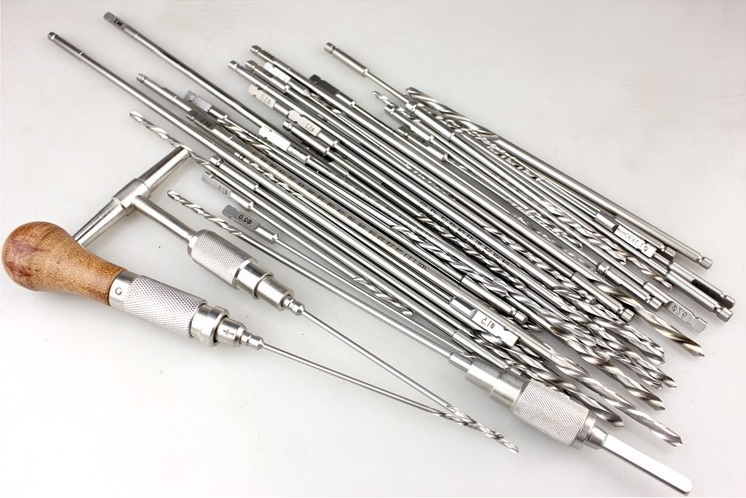Orthopedic drill bits are specialized cutting tools used in various bone surgeries for tasks like creating holes, shaping bone, and retrieving samples. They come in a variety of types and specifications to suit the specific needs of each procedure. Here’s a detailed breakdown:
Orthopedic Drill Bit Types
Solid Shank Drill Bits
- Simplest design with a solid body and a straight shank for attachment to the power tool.
- Available in plain shank (standard) and quick coupling (easier attachment/removal).
- Used for general drilling applications where precise wire placement isn’t crucial.
Cannulated Drill Bits
- Hollow center running the length of the bit for features like:
- Passage of guide wires or K-wires for precise placement before full drilling.
- Irrigation to cool the bone and remove debris during drilling.
- Also available in plain shank and quick coupling variations.
- Designed specifically for the AO (Arbeitsgemeinschaft für Osteosynthese) fracture fixation system.
- Have a unique tapered shank for a secure fit in AO screwdriver handles.
- Used for drilling holes for placement of AO screws and plates.
Flexible Drill Bits
- Offer increased flexibility for accessing hard-to-reach areas or navigating around delicate structures.
- Useful in minimally invasive surgeries for greater maneuverability.

STR (Small Taper Shank) Drill Bits
- Similar to AO bits but with a slightly different tapered shank design.
- Used with specific power tools designed for the STR interface.
Specifications
- Diameter: Ranges from 1mm to 5mm, catering to various hole size requirements and bone types.
- Length: Typically falls between 60mm and 250mm, offering options for drilling depths in different procedures.
- Material: Primarily made from high-strength, medical grade stainless steel for durability and corrosion resistance. Some may utilize titanium for specific properties.
- Cutting Flute Design: The grooves on the drill bit that remove bone chips. Variations can impact cutting efficiency and debris evacuation.
- Surface Finish: A highly polished surface minimizes friction and heat generation during drilling.
Choosing the Right Orthopedic Drill Bit
Selection depends on several factors:
- Surgical Site: Spinal surgery requires different bits than minimally invasive joint procedures.
- Bone Type: Denser bone may necessitate more robust drill bits.
- Procedure Requirements: Hole size, need for guide wire passage, and desired maneuverability all influence selection.
Additional Notes
- Orthopedic drill bits are typically sterile and disposable for single-use to prevent infection.
- Advanced features like laser marking for improved visibility during surgery may be available in some models.
Remember, this information is for educational purposes only. Always consult with a qualified medical professional for details on specific surgical procedures and the appropriate drill bits used.

